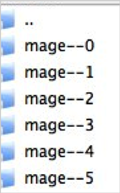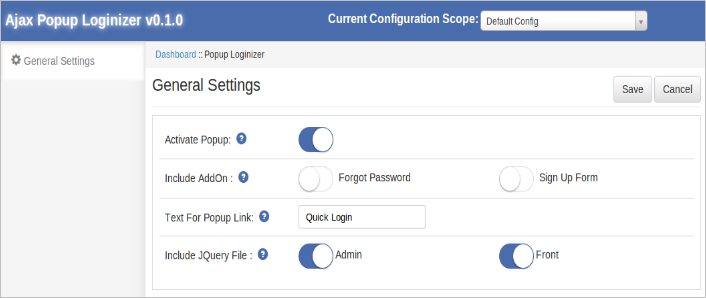Steps For Installation of Magento Ajax Popup Loginizer Extension
Required Materials:
- All files used by the extension.
- FTP access to your website.
The connect manager is a useful tool for installing extensions, but prefer hands-on method when it comes to installations. It feels more comfortable when you are personally in control of the process. Do you see an app-code directory there, what about app-etc-modules? If you don’t see these directory paths and files contained within them, chances are that the extension download was faulty. Take a look at the package.xml file, this is the blueprint used by Magento Connect to arrange the files in the proper places. You may need to use this to ensure that everything is as it should be. Once you have reviewed the extension files you are ready to perform the last step. Using your FTP client, drag all of the files onto the store root of the magento instance.
Depending on the number of files in the extension, this may take a few moments. Now go to the admin console and click Flush Cache Storage. This is the requirement for any extension that adds pages to the admin console. Logging out and back in is also required to ensure that everything loads properly. If you cannot clear the cache via the admin console for any reason, you will need to clear the cache manually via your FTP client (see the first FAQ question for assistance). That is the final step. Congratulations on a successful installation.
Troubleshooting and FAQs
I loaded all files onto my Magento store, and now get a white screen for some or all of the admin console.
This is a fairly common problem, and 99% of the time it is cache related. If you can get to it, go to System->Cache Management and click Flush Cache Storage. This will ensure that everything cached by Magento is deleted and will to be regenerated. Log out and back in to complete the process.
If you are completely cut off from the admin console, navigate to the var-cache directory of your website. You should see a series of directories named mage*. Delete all of these directories (DO NOT DELETE var-cache). This is the equivalent of flushing the cache storage from the admin console.
I am receiving a Magento error when accessing certain pages. How can I debug this?
This question really deserves a blog post all to itself, but a good start would be to go into the errors directory of your store. Locate the local.xml.sample file and rename it local.xml. The next time you see the error detailed information will be provided explaining where the error took place. Dont forget to change this back when you are finished troubleshooting!
I have a critical error with my webstore and need to turn off an extension I cannot access the admin console. What do I do?
Go to the app-etc-modules directory and open the file that goes with your extension. The naming convention is generally DeveloperName_ExtensionName.xml. In this case it would be Vss_PopupLoginizer.xml.
Look for the active tags in the file, change the value from true to false and save your changes. This tells Magento that the extension is disabled and not to run any code associated to it. Deleting the Magento cache is recommended (and most likely required) for this change to take effect.
User Guide
1. To access the Ajax Popup Loginizer Module . Click on System menu and then click Popup Loginizer as seen below.
2. After clicking the module settings will display like shown below.
In modules top navigation bar, there are following controls:
- Current Configuration Scope : This option is used to change the store configuration scope.
- Save : This option is used to save the module settings.
- Cancel : This option will cancel the current changes in settings.
General Settings
On clicking the module link, this tab will be open by default as shown as above screen. This tab has following options :
- Activate Popup: This option is used to enable or disable the module.
- Include Addon: This option is used to add Forgot form and Registration form with in popup. When there are included then user get the forgot password form and registration form within popup as shown in above Introduction section. Otherwise when user will click on forgot password or sign up link, he will be redirect to forgot password page or registration page respectively.
- Text for Popup link: Enter the text you want to display as a link next to default login link i.e. in top links.
- Include jQuery: jQuery i.e. a javascript framework is required for this plugin to work. Sometimes themes used in Magento already includes it but sometime they do not. If jquery is already included in your theme then deactivate else activate to include it.
We hope that we have covered all the concerns regarding the installation and product guide of this Magento Extension. You should also check our blog on Registration Related issues of Magento Ajax Popup Login.
Liked This? You’ll Like These Too






